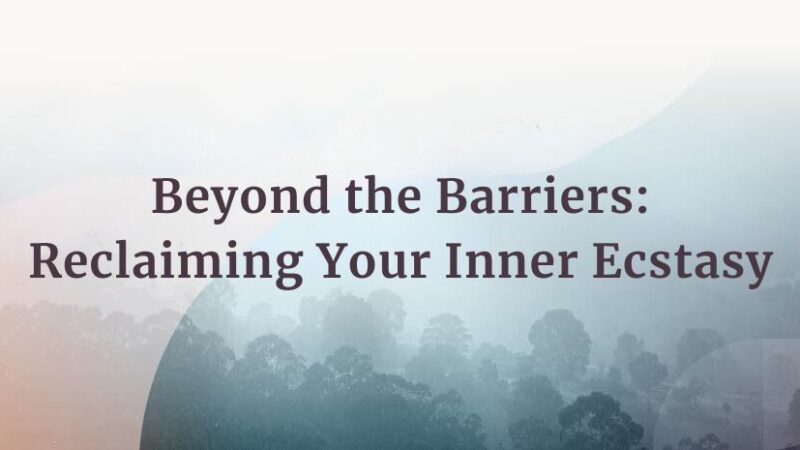
When I tell my students that one of the most magical things they can do is take a bath, I rarely have to say anything more, for we intuitively know that the time we take to shower and bathe is time touched by wild magic, and the space in which we do so is space imbued with the scent of the sacred.
Make Your Bath Sacred
Consider your own bathing rituals right here and right now. Begin with the fundamental question, “What needs to be washed away, removed, released?” And then, “What kind of bathing appeals to you the most?” A brisk shower or a slow bath? If you use products like bubbles, soap, bath salts, or body scrubs, why did you select them? Do you love to bathe in the privacy of your own home, or do you feel most connected to your remembered magic when you immerse yourself into a wildly running river, the cresting waves of a great ocean, or the green depths of a limestone spring? What elements need to be in place to change your bathing experience from one that is merely practical and about physically cleaning yourself to one that is also extraordinary and capable of washing away deeper marks and struggles?
Where do you feel dry?
Just as the land where we live contains water, our soul soil also holds swift rivers, vast oceans, and deep springs. These interior waters are the places understood to hold the human capacity for deep feeling and emotion, creativity, love and compassion, vitality and nourishment. And just like bodies of water in the surrounding world, our interior waters can be dammed up, walled off, covered over, and blocked in a variety of ways. These waters can also be polluted. Sometimes this is done by others or is a result of the toxic aspects of the culture at large, and sometimes we do it to ourselves without realizing it. Having set up house in multiple arid lands, I can tell you from firsthand experience that the presence or the absence water in our surrounding world presses us to ask hard questions about our internal waters. Consider where your life feels dry, uninspired, lacking creativity, fecundity, and fertility? Where are the places that have become too tough and hard and not nearly tender enough? Where has your soul soil been in drought for year upon year, so that all you can find there is dry dust and cracks in the ground? Where is the spark of life lacking or completely absent?
Where do you feel in the flow?
After considering what makes you feel dried up and devitalized, consider the opposite. What calls up your life and creativity? What makes you feel like your inner landscape is well irrigated and flowing with wide rivers or caressed by ocean waves? What are the ways that you best clean up the hurt places in your life? What are the medicines that help you heal most readily and completely? Our work here calls us to an awareness of the places that feel broken, the parts of life and the stories, beliefs, and habits that devitalize us from the inside out. Working with water in an intentional manner can also highlight these places, for we become acutely aware of where precisely there is lack. It is natural to feel that there is not enough water in the whole world to slake the deepest soul thirst and soothe the most parched places of our hearts. It is true: there is not enough water in the world to quench that thirst. But there is enough water in each of us. When you live in a desert, as I have for most of my life, you come to know this as fact. There is good water, strong and flowing, usually many miles beneath the surface, and when the thunderclouds come in and the wind begins to blow just so, the sheer rocks themselves begin to usher forth rivers and streams, and the well that springs up from the deepest self carries on its waves life-bestowing and life-affirming blessings.
Don’t have time for a full sacred bath every day? Try these stepping stones instead!
Make moon water. Fill up a clear glass jar with water and leave the top of it open. Set it outside under a full moon. Drink it down the next morning and note the texture, taste, and feel of the water as you do. Notice too how your body feels after drinking it.
Create a sacred spray. Get a spray bottle, fill it with water, add a few drops of your favorite essential oils, and use this quick version of sacred water to spritz yourself and your home, as you like.
Give yourself a footbath. Fill a basin with warm water, and add a teaspoon of baking soda, some lemon and lime slices, and any essential oils you like. After soaking your feet, pick out an oil or lotion to anoint your feet. Cleansing and anointing the feet is an ancient practice that honors one of the most sensitive (and taken for granted) parts of our bodies.
This is an excerpt from Making Magic: Weaving Together the Everyday and the Extraordinary by Briana Henderson Saussy.
Download a free Making Magic journal here.

Briana Saussy is a teacher, spiritual counselor, and founder of the Sacred Arts Academy, where she teaches tarot, ceremony, alchemy, and other sacred arts for everyday life. She lives in San Antonio, Texas. For more, visit brianasaussy.com.
Buy your copy of Making Magic at your favorite bookseller!








